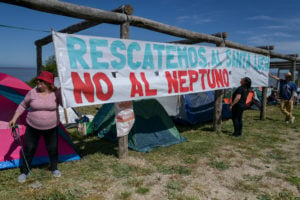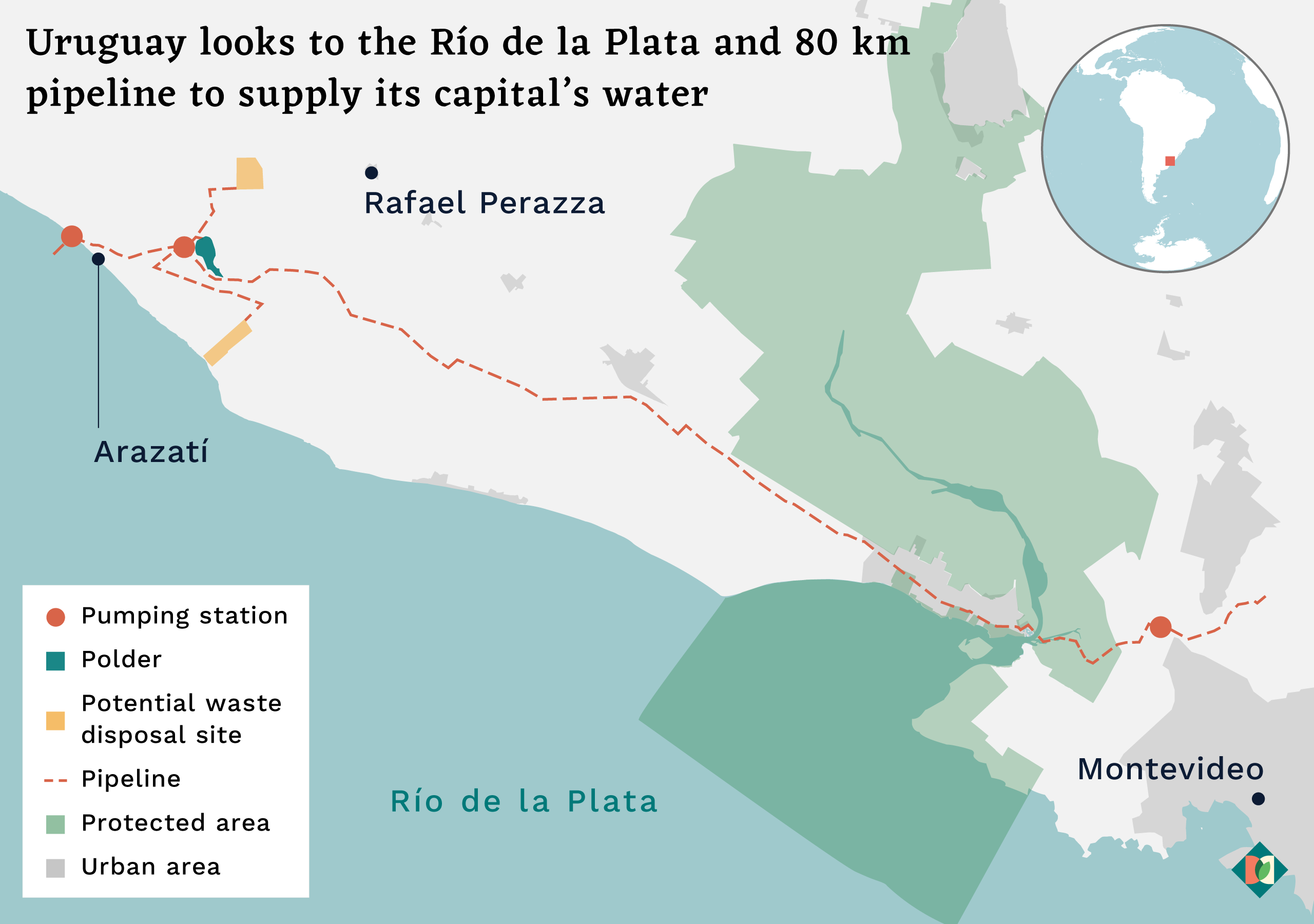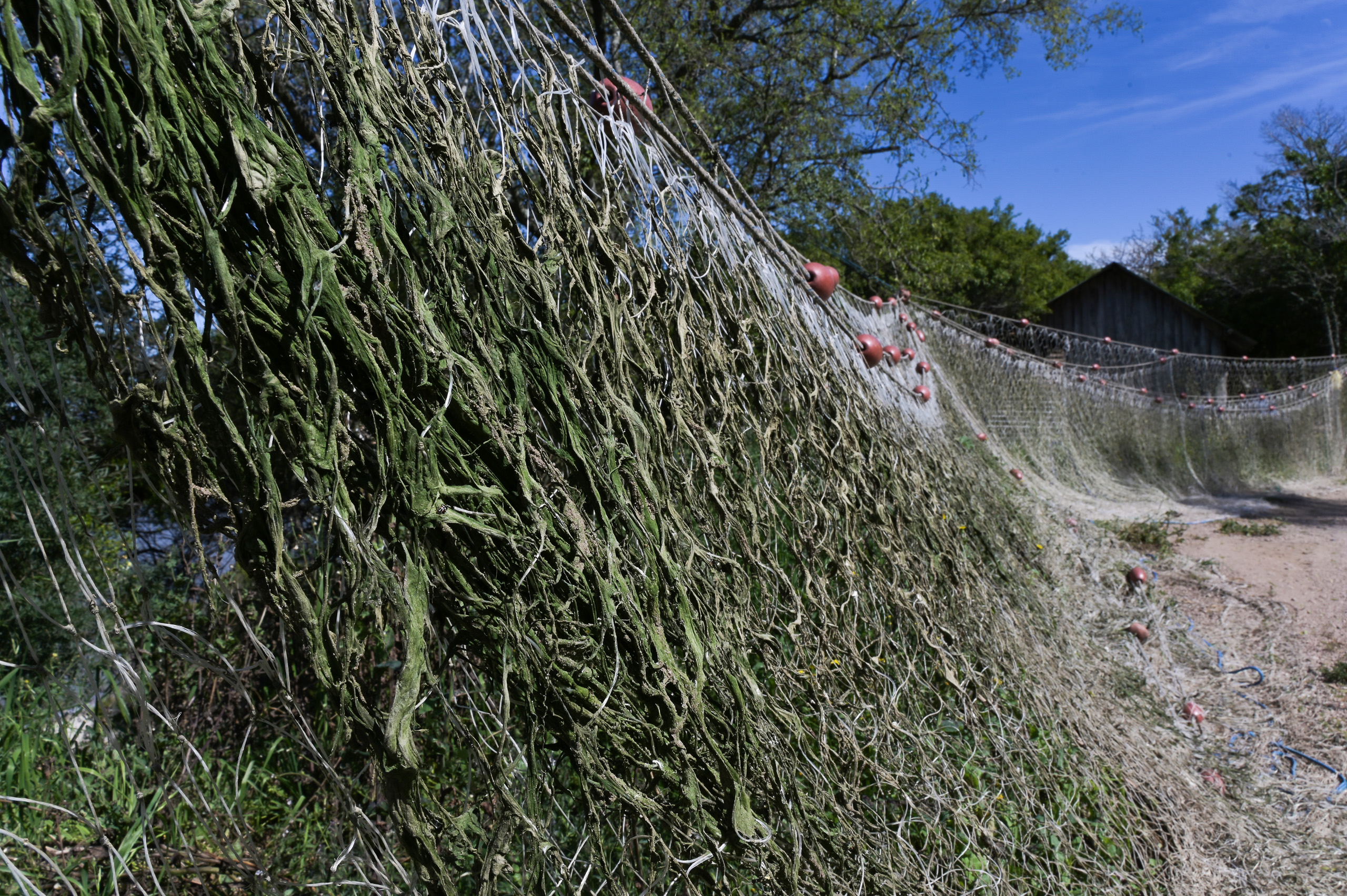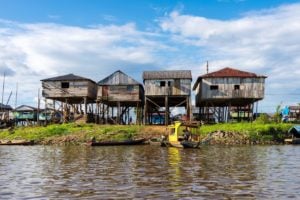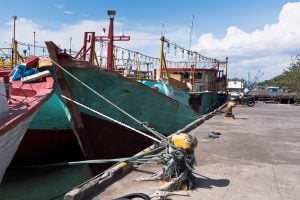Rain has finally arrived in the metropolitan area around Uruguay’s capital, Montevideo, ending a water crisis that between May and August left more than 1.6 million people without tap water fit for drinking.
Three years of exceptionally low rainfall has exposed a key vulnerability in Uruguay, with 60% of the country’s 3.5 million population supplied by the southerly Paso Severino reservoir. As the reservoir dried up, the government looked to meet shortfalls by turning to the brackish waters of the Río de la Plata – the estuary that divides Uruguay and Argentina, in which the fresh waters of the Paraná and Uruguay rivers meet saltwater from the Atlantic Ocean.
To avoid similar crises, the government now plans to build a water treatment facility on the Río de la Plata, as well as a polder, a reclaimed area enclosed by dikes in which water can be drained and controlled – or in Uruguay’s case, stored as a small reservoir for when availability is low.
Called the Neptuno project, the plant would reportedly provide Montevideo and its surrounds with up to 229,000 cubic metres of drinkable water per day, around a third of its demand. This area is currently supplied only by the basin of the Santa Lucía River, which feeds the Paso Severino.
However, in Arazatí, the quiet riverside town where the Neptuno facility is due to be built, residents have misgivings about the project. Located within the metropolitan area some 70 kilometres west of the capital, much of the land in Arazatí is dedicated to livestock, forestry, and potato cultivation. There are fears the town may therefore suffer due to Neptuno’s potential impacts on the local environment and water output.
The project
First proposed in 2021, Neptuno moved ahead in August this year when the government awarded the contract to a consortium called Aguas de Montevideo, comprised of the Brazilian company Fast Industry and Commerce, alongside Uruguayan firms Ciemsa, Berkes and Saceem.
Neptuno intends to use a pipeline that will take water from deeper parts of the Río de la Plata, around 1,500 metres from the Arazatí shoreline. This is similar to facilities in Buenos Aires and the city of Colonia, to the west of the town – although those plants do so in sections of the river where fresh water is more abundant. From Arazatí, the water will pass through three pumping stations and a treatment plant to lower its salinity, and on to be stored in a 15 million cubic-metre polder.
In early October, more than 100 people greeted the arrival of spring in Arazatí by setting up a protest camp on the beach – right where the first of the Neptuno project’s three pumping stations will be built. A white blanket of fine sand, the beach offers turbid but calm waters, beautiful sunsets and almost no telephone signal.
Diálogo Chino visited Arazatí as Uruguay celebrated its annual Heritage Day, during which historic and important buildings are opened to the public. While 70 km to the west in Montevideo, thousands went out to explore and celebrate, in Arazatí, activists spoke of defending the country’s other “heritage”: its lands and waters.
One such activist is 29-year-old Sofía González Mansilla, who has been visiting Arazatí since she was a child. Mansilla is a member of Tucu Tucu, an NGO that began defending Arazatí’s beaches in 2020, when it challenged the forestry industry’s privatisation of a local forest. The disputed areas had historically provided access to a beach at the river’s edge. “It was much nicer before,” says Mansilla. “We could get to the dune and go down to the beach by the little descent that Sánchez, one of the fishers, had made.”
Algal blooms raise questions
Eduardo Sánchez is one of 20 fishers who live in Arazatí. These days, his work is dictated by “la baba” (the slime), his name for the greenish algae in the water here: “When I was a kid, the slime wasn’t as strong as it is now … let it dry and it smells of chemicals. During the summer it appears at the surface, but during winter it sinks and sticks to fishing nets.”
Cyanobacteria, also known as blue-green algae, have become a focus of pollution cases in Uruguay. They have made appearances along the country’s coast in problematic blooms, generated by excess nitrogen from farmland leeching into waterways.
Between 2016 and 2021, a satellite imagery study by Montevideo’s University of the Republic concluded that a significant portion of Uruguay’s western coastline – where Arazatí lies – had developed a permanent concentration of cyanobacteria.
It is too soon to gauge the damage this has caused, but cyanobacteria can produce a wide range of toxins harmful to animals and humans. Contact with these can lead to liver and gastrointestinal disorders, as well as damage to the skin and mucous membranes; in severe cases, these toxins can be lethal for animals, though there are limited cases of human deaths linked to these algae.
Diálogo Chino spoke to the geographer Marcel Achkar, who says Neptuno’s proposed location is a mistake: “When there is little flow in the Uruguay River, the cyanobacteria concentrate across the entire Río de la Plata estuary, and when there is a lot of flow, it pushes it against the coast, right where the intake is.”
Achkar also criticises the planned polder because it will receive water containing cyanobacteria, yet “it is not proposed to waterproof the floor” of the polder. He says this means it could potentially pollute the Raigón aquifer, which lies beneath Arazatí.
Gerardo Amarilla, Uruguay’s undersecretary for the environment, acknowledges that the government is yet to conduct any studies regarding the installation of the pumping station, the polder and a landfill that will be dedicated to housing wastes from the water treatment plant.
So far, the national water utility, OSE, is the only government body to undertake an environmental assessment of Neptuno. This assessment, however, was limited to the location of the landfill.
The Río de la Plata: a salty issue
According to Roman myth, only Neptune has the power to control the water. This project’s auspicious name could prove ironic for Aguas de Montevideo though, with the Río de la Plata estuary’s constantly shifting salinity levels beyond the consortium’s control.
Even if the project is completed, says Achkar, “we would be in the same conditions we experienced a few months ago,” referring to the two months in 2023 when homes in southern Uruguay saw salty water flow from taps, and thousands of water heaters broke due to high levels of sodium. The researcher has warned of technical problems for the Neptuno project, among them the unpredictable nature of salinity levels and their implications for the polder system.
This year, a study from the University of the Republic highlighted a recent episode of extreme salinity on the Río de la Plata during summer, the season when water consumption peaks. In the first three months of 2022, researchers recorded 66 days in which salinity levels in waters near Arazatí were exceptionally high. Furthermore, meteorologists have projected that this will become increasingly typical due to climate change and the advance of the ocean over the watersheds of southwestern Uruguay.
However, Amarilla downplays concerns about the area’s water salinity: “The average number of episodes [of high salinity] per year is 15, 20 days, historically. There was one year when there were 80 days, which was a historic year, an episode that was a first in 100 years. So, the average salinity there is very low.”
Achkar counters that even low levels of salt in the water is a problem: “Water with salinity – even at low levels – has bromides in it. Bromides with chlorine generate bromoform, which is one of the trihalomethanes.” These chemical compounds, a by-product of disinfection processes in tap water treatment, became a well-known entity in Uruguay during the water crisis, with long-term exposure linked to increased bladder cancer risks.
The pipeline
The Neptuno project’s pipeline route is another unresolved question. The water must travel to the Melilla dam, to the north-west of Montevideo, from which it would be distributed to the capital. The environment ministry wishes to extend the existing network of pipes, however, which entails crossing a protected habitat at the mouth of the Santa Lucía River.
The pipeline means that Neptuno’s impact would spread beyond Arazatí to the communities of Rafael Perazza, Kiyú, Rincón del Pino and Ciudad del Plata, potentially affecting the more than 30,000 people who live within them. The pipeline could cross seaside resorts, dairy farms, fishing villages, farmland and protected areas.
Digging up Arazatí to lay a water pipeline presents archaeological problems, too. “Arazatí is one of the richest areas in Uruguay in terms of palaeontology, because it has a very particular fauna, unique in the region,” explains Daniel Perea, a University of the Republic palaeontologist. “It has sedimentary rocks that contain a succession of fossils ranging from 10 million years old to about 8,000 years old.” Fossils of mammals and crabs unique to Uruguay have been found there.
Legitimate solution or political football?
According to the Neptuno project’s 17-year contract, the work will cost nearly US$290 million. But to this is added a reported annual cost of US$50.6 million dollars for its operation and water output, adding up to US$890 million over the contract period.
These figures are much higher than those for the proposed Casupá dam, for which construction costs are reported to be US$80 million. Located north-east of Montevideo in the department of Lavalleja, this project in the Santa Lucía Basin was signed off by Uruguay’s previous government, run by the Frente Amplio (Broad Front), now the country’s main opposition party. This project won backing from the Development Bank of Latin America and the Caribbean (CAF) but work never started.
The former president of the OSE is Edgardo Ortuño. He believes Uruguay’s current government is rushing the Neptuno project in the run-up to elections in 2024 and overlooking the need to build consensus.
“We are in 2023 and Uruguay does not have Casupá, but neither does it have Arazatí, which has just been awarded, so is only just beginning the process of analysis, environmental study and construction,” says Ortuño. “We are back to square one: this government is not going to finish Casupá, which it could have done and finished; it embarked on Arazatí and it is not going to finish that either and, of course, it is not going to pay for it.”
Marcos Míguez, water secretary for the OSE civil servants’ federation, is more categorical: “The Neptuno project is, first of all, a political issue, and then a matter of economic benefits and the desire to continue privatising and doing business with water.”
A November 2022 survey suggested that some 47% of Uruguayans are opposed to the Neptuno project, while 43% would support it. Among the respondents, those who reject the project mostly live in Montevideo and support the Frente Amplio.
Asked whether it is possible to stop Neptuno’s progress if its forthcoming feasibility study calls for it, Amarilla answers in the affirmative, but then clarifies his position: “That is to say stop it, change it, modify it.”
Diálogo Chino spoke to sources who believe that, if elected back into power in 2024, Frente Amplio would delay the construction of Neptuno, at least until the dust settles on the election. Meanwhile, Amarilla thinks “there are many opposition officials and technicians who agree with the work” – a belief shared by many in Arazatí.
